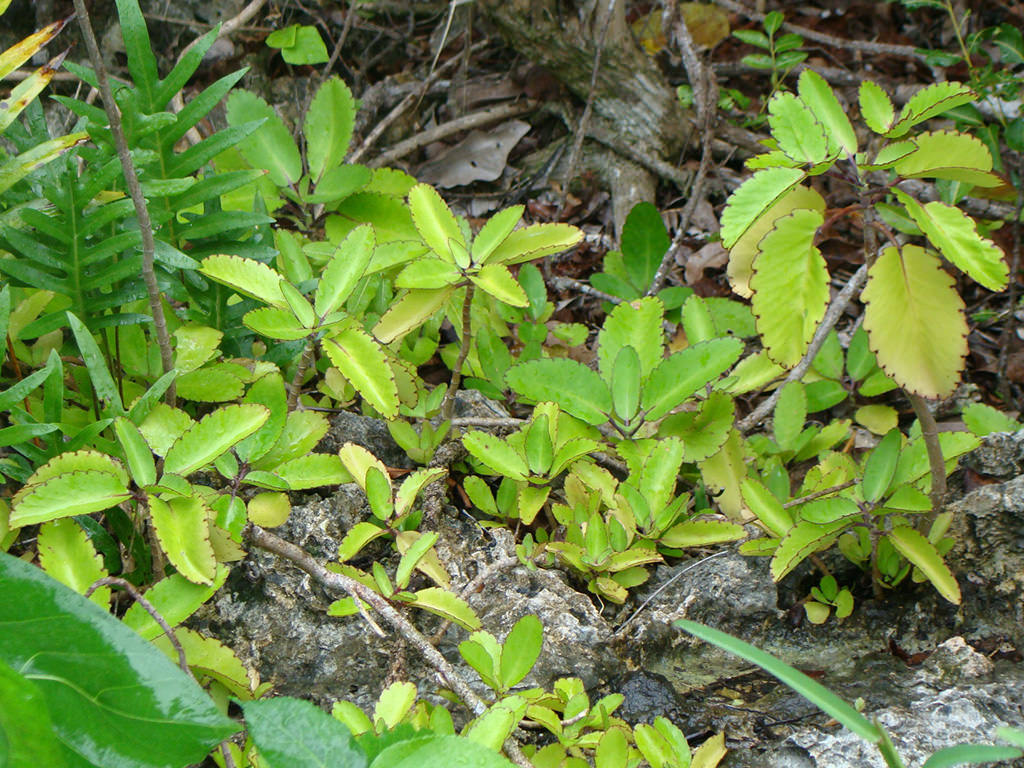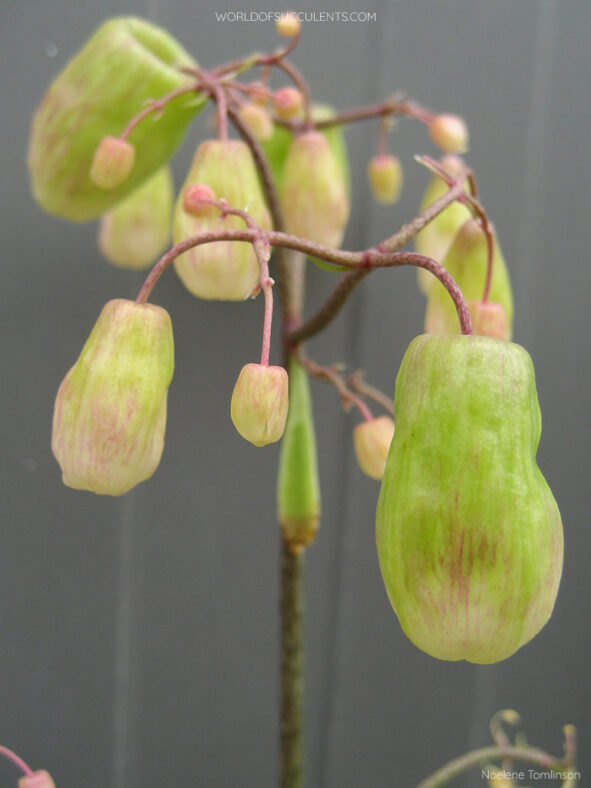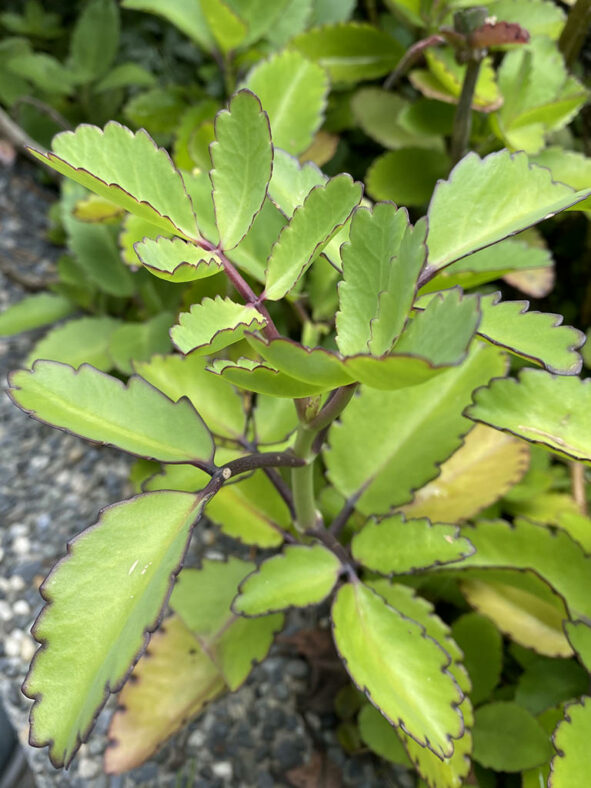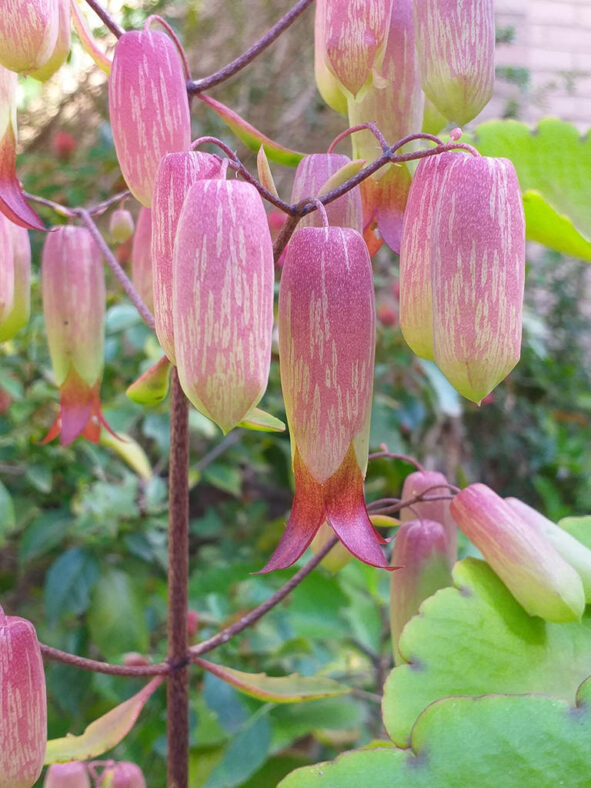Kalanchoe pinnata is widely grown as an ornamental and is used in folk medicine to treat different health conditions.
Scientific Name
Kalanchoe pinnata (Lam.) Pers.
Common Name(s)
Air Plant, Cathedral Bells, Curtain Plant, Floppers, Good Luck Leaf, Goethe Plant, Life Plant, Mexican Love Plant, Miracle Leaf
Synonym(s)
Bryophyllum pinnatum, Cotyledon pinnata, Crassula pinnata, Vereia pinnata
Scientific Classification
Family: Crassulaceae
Subfamily: Sedoideae
Tribe: Kalanchoeae
Genus: Kalanchoe
Etymology
The specific epithet "pinnata (pin-NAY-tuh)" means "pinnate, feathered, winged" and refers to the upper leaves, which are mostly pinnate and have 3 or 5 short-stalked leaflets.
Origin
Kalanchoe pinnata is native to Madagascar but was introduced and naturalized in various tropical and subtropical regions.
Description
Kalanchoe pinnata, also known as Bryophyllum pinnatum, is a succulent plant with stout, erect stems that are usually unbranched and bear oppositely arranged and evenly spaced leaves. The stems are hollow and can grow up to 6.6 feet (2 m) tall, branching at the base. The leaves are simple in young plants but become pinnately compound with 3 to 5 leaflets as they mature. The leaves and leaflets are oblong to elliptic with scalloped margins, measuring up to 8 inches (20 cm) long and 4.8 inches (12 cm) wide. They are green, streaked with purple, and edged with orange-red. The leaves are attached to the stem by a petiole that reaches up to 3 inches (7.5 cm) in length. They often produce plantlets on the margins.
During winter and spring, Kalanchoe pinnata produces attractive flowers in large panicles. The flowers are pendulous with a bell-shaped, green to pale yellow calyx with red to violet stripes and a cylindrical, greenish-white corolla with a maroon exserted portion. The corolla can reach up to 2 inches (5 cm) in length and is mainly enclosed by the calyx.

How to Grow and Care for Kalanchoe pinnata
Light: Kalanchoe pinnata grows best in full sun but usually appreciates some partial shade during the hot summer days. When growing indoors, place it near a window with indirect sunlight. If it does not receive enough light, it may stretch.
Soil: The plant needs soil that drains well and does not like "wet feet." A commercial potting mix for succulents will work well.
Temperature: Kalanchoe pinnata thrives in heat and humidity but cannot handle frosts. It grows best in USDA Plant Hardiness Zones 10a to 11b, with average minimum winter temperatures ranging from 30 to 50 °F (-1.1 to 10 °C).
Watering: From spring to fall, water the plant thoroughly, but let the soil dry between watering as overwatering may cause stem rot. Reduce water during winter and only water it enough to prevent the leaves from shriveling.
Fertilizing: To ensure the plant has the nutrients it needs to thrive, fertilize it occasionally during the growing season with a balanced fertilizer. Dilute the fertilizer to half or quarter strength and apply it every two weeks.
Repotting: The plant thrives better when frequently repotted. For optimum growth, repot it every two years in spring, going up one pot size each time.
Propagation: Kalanchoe pinnata can be propagated easily by seeds, offsets, or leaf and stem cuttings. The best time to take cuttings and separate offsets is spring, while spring and summer are ideal for sowing seeds.
Learn more at How to Grow and Care for Kalanchoe.
Toxicity of Kalanchoe pinnata
Kalanchoe pinnata is not toxic to people but should be kept away from pets because, if consumed, it may cause vomiting, diarrhea, and heart arrhythmias.
Links
- Back to genus Kalanchoe
- Succupedia: Browse succulents by Scientific Name, Common Name, Genus, Family, USDA Hardiness Zone, Origin, or cacti by Genus
Photo Gallery
Click on a photo to see a larger version.


